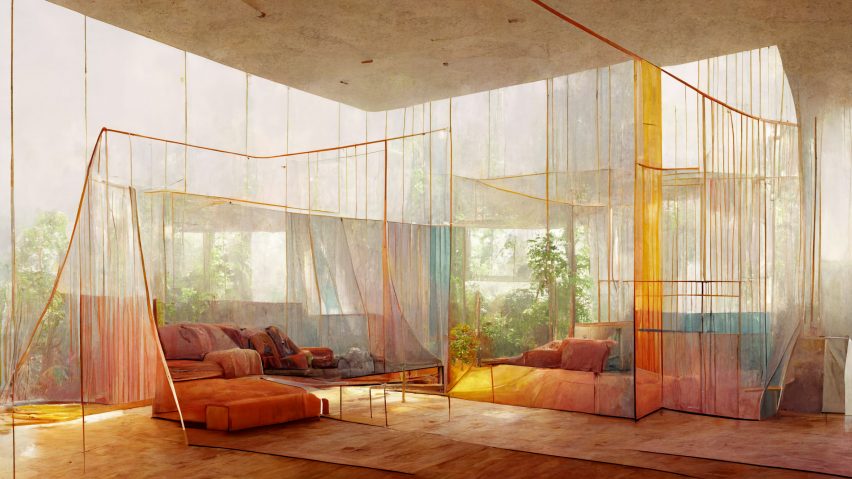
How AI software will change architecture and design
AI text-to-image software like Midjourney, DALL-E and Stable Diffusion has the potential to change the way that architects approach the creation and concept stages of designing buildings and products, experts say.
In the past year, numerous technology companies have released software that uses AI systems called neural networks to convert users' text inputs into AI-generated images.
The images created by these bots – including eerily real-looking imaginary buildings – have become an internet sensation and led to discussions about how they could impact the future of design and architecture.
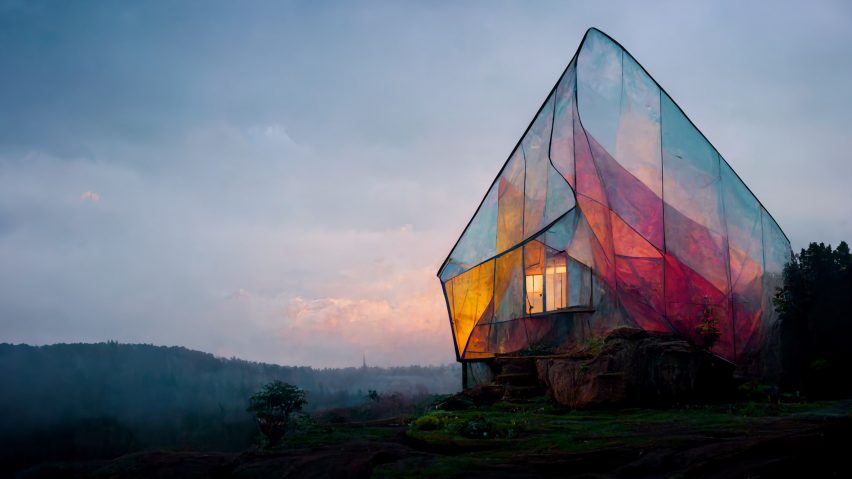
Bill Cusick is the creative director at one such company, Stability AI – which has released text-to-image software called Stable Diffusion and DreamStudio – and also has experience working with the software of the popular visualisation company Midjourney. He believes that the software is "the foundation for the future of creativity".
"I'm seeing a sort of playfulness in design that I don't think we've ever seen before in terms of architectural design and renderings," he told Dezeen.
However, future applications of the technology are still up for debate, even among designers known for using it.
"It's meant to capture a vision of a project quickly"
Andrew Kudless, who works under the moniker Matys Design, said the technology may come to be essential in the early stages of projects, taking the place of sketching and idea creation.
Like architectural sketches, AI imagery is often colourful and dreamlike, but not necessarily actionable as a detailed plan, he explained.
"Whenever I'm sketching with a pencil, I don't worry if the column or whatever is in exactly the right place," Kudless told Dezeen.
"Because that's not the goal of a sketch. It's not meant to be incredibly accurate or precise. It's meant to capture a vision of a project quickly."
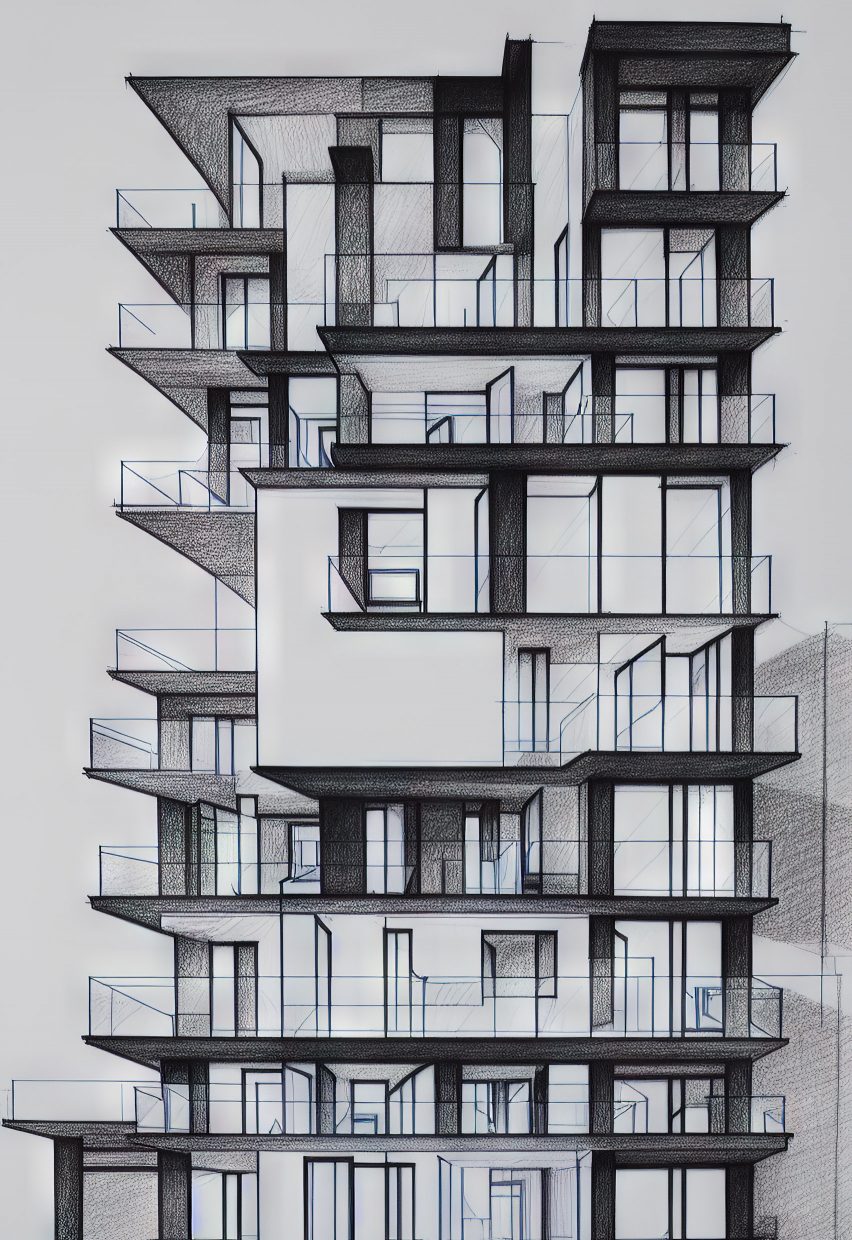
Indian designer and Midjourney user Manas Bhatia, who creates conceptual art showing futuristic cityscapes that depict complex integrations of structures and nature, agreed.
"AI has a huge potential in solving the 'thought-to-execution delay'," he told Dezeen.
"Currently, we are witnessing designers and creative professionals use AI for concept generation purposes, but with time AI will become an important part of the overall design process."
AI can reduce "thought-to-execution delay"
A trained architect, Kudless works in Midjourney to create evocative structures – often draped in fabric – that he believes show how material and scenery not typically included in initial architectural plans can change the way that projects are presented to clients.
Architecture studios are currently often awarded projects based on renderings that are expected to bear as close a resemblance as possible to the building eventually constructed.
"I think we should be showing [clients] renderings almost from day one, and getting them used to the fact that they're going to change," he said.
"That's actually a better thing for the relationship between the client and the designer because it engages them in the process in a way that's really important."
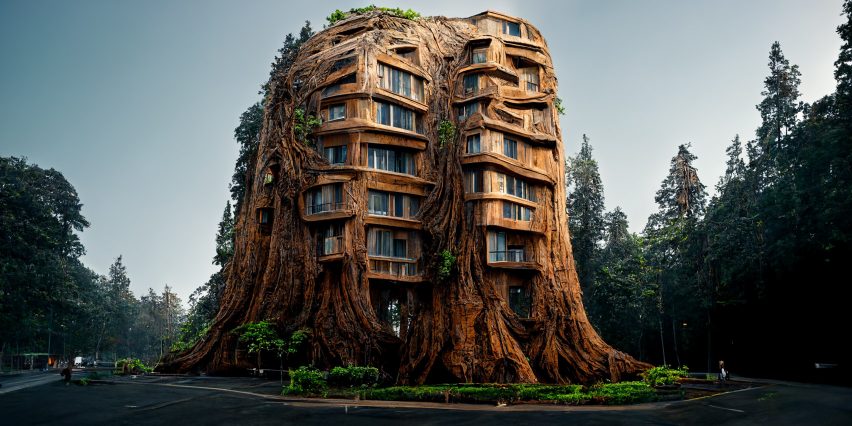
Designers acknowledged that the software has the potential to change the way in which labour is executed in architecture and design offices.
"It's incredibly frustrating at times the amount of labor that especially younger people are being asked to do within firms to produce [render] images," said Kudless.
"And I think if we can automate some of that and still gain control, then I'm all for that."
"This isn't going to upend anything"
He added that some more menial tasks like repeats for offices and parking lots – designs that take simple patterns and repeat them in different instances – could be helpful in augmenting the design process.
Cusick agreed that the technology, which produces its images by taking established aesthetic and formal concepts and mixing them in imaginative ways, creates huge potential for freeing up labour at the early design stages.
"It has become about the magic of combining styles that are totally opposite, taking different styles and combining them, taking different architects and using multiple different architects as references," said Cusick.
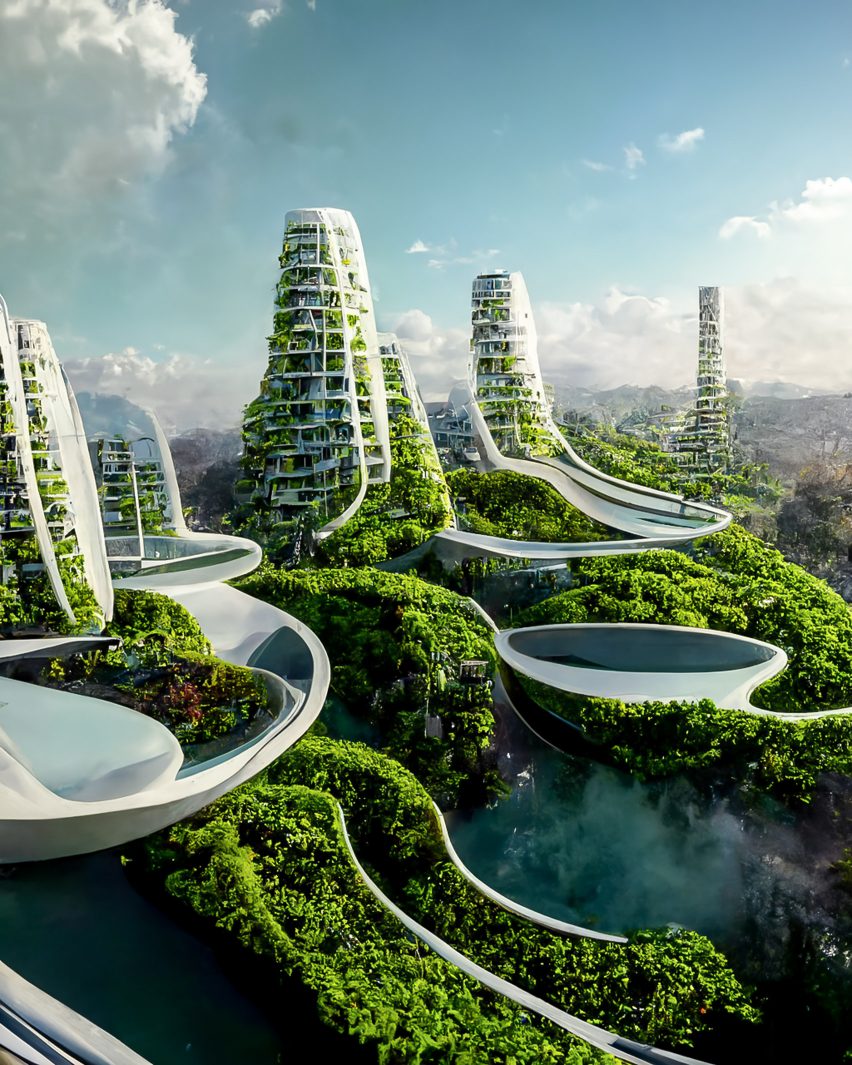
But Kudless believes that text-to-image software is more of a powerful tool than a replacement for architects, as it still requires a user with knowledge and skill to produce useful results.
"It's not unguided like natural selection," he said. "This isn't going to upend anything."
When working with the tools, designers often create hundreds or thousands of images that they then need to sort through and edit manually.
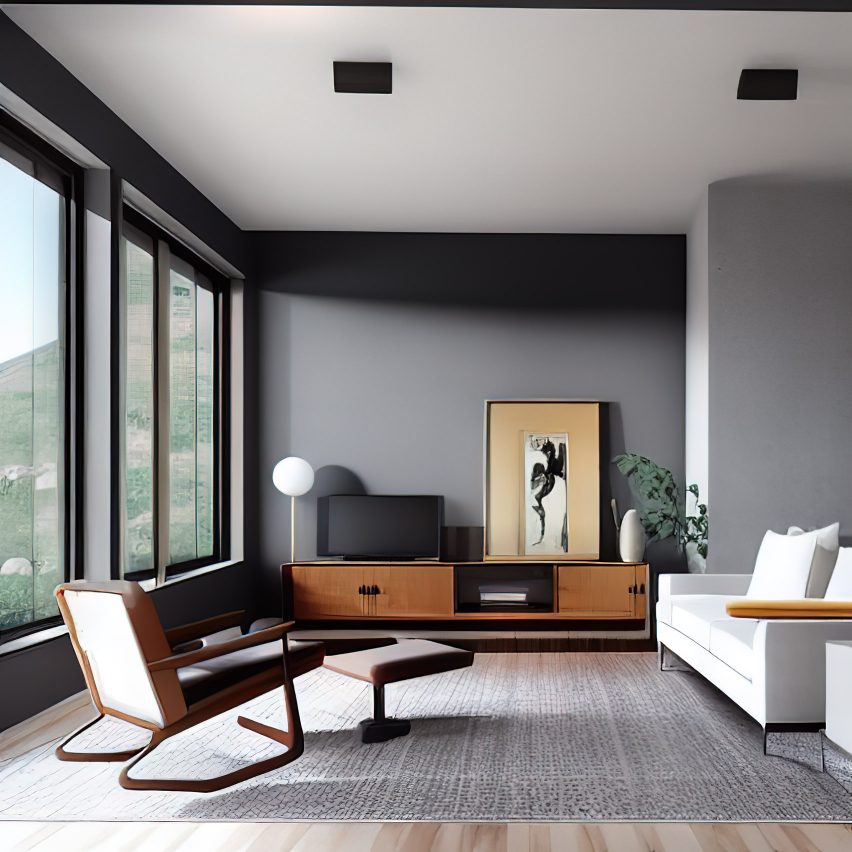
Though the AI systems register the text typed in order to generate images, they do not understand language as humans do, often focusing on secondary nouns and adjectives or misunderstanding context.
Choosing the right words to create something valuable therefore requires finesse.
"The software is a tool that needs a human counterpart to function," explained Bhatia, who creates conceptual art showing futuristic cityscapes that depict complex integrations of structures and nature.
"AI generates images based on the designer's idea that is fed in the form of text, and that idea will change from one user to another."
Cusick likened the software to chess, in that it takes a short amount of time to learn but decades to master.
"It cannot perceive the dynamic user"
The use of AI for design extends beyond architecture. Cusick said that interior design solutions have shown a lot of promise on his firm's platform.
Industrial design, too, has made inroads through the use of text-to-image software.
American designer Dan Harden of industrial design company Whipsaw said that AI is "gradually" entering industrial design but is "still primitive".
"Unlike digital design, where AI is integrated within a common software platform, product hardware design is different," he said.
"The three-dimensional aspects of a product and its relationship to its user and its environment present exponential challenges for AI, mostly because it cannot perceive the dynamic user interaction nuances within the physical world in which a product resides."
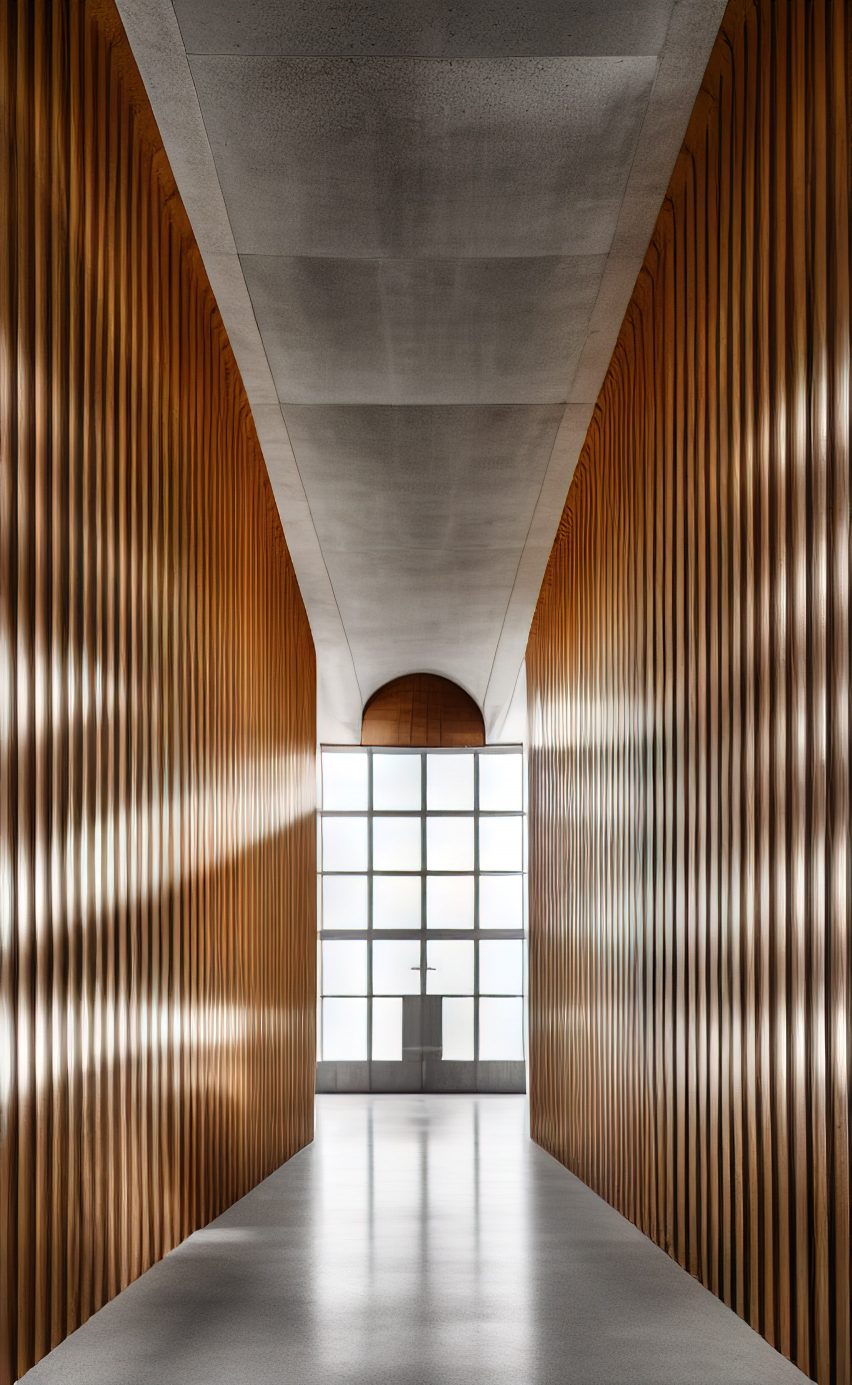
"Perhaps most importantly," Harden continued. "The actual design process is hard to replicate using ADI. It lacks 'embodied cognition' which reasons that a living creature's physical presence has bearing on how it thinks, and that the mind is not only connected to the body, but that the body influences the mind."
But Harden believes that as AI design progresses, it will get closer and closer to these embodied principles.
Kudless agreed, arguing that further advancements in text-to-image technology may have more and more noticeable impacts on designers – though he believes that AI software programs are more likely to prioritise art, animation and cinema.
He said that the next big step in software development would be AI that can output 3D visualisations or videos from text prompts.
"Once this gets into video, for me, it's going to change a lot of professions," he said.
According to Cusick, Stability AI is already working hard at implementing 3D processes for their platforms, and voice-to-image and image-to-image capabilities are other potentials for the technology that may soon be widely used.
"We're working on it as fast as we can," he said, adding that 3D processing was a "completely different animal" to 2D generation.
"We have a couple of different approaches that we're working on. It's a top priority."
Tendencies towards bias
One of the biggest problems with text-to-image technology is their tendency to bias, caused by their use of pools of existing images to produce new visualisations.
According to Kudless, certain architectural styles are overrepresented, as well as digitally generated images as opposed to real photography.
Kudless used the analogy of classic education, saying that teachers can create biases by focusing on one architect or style and ignoring others.
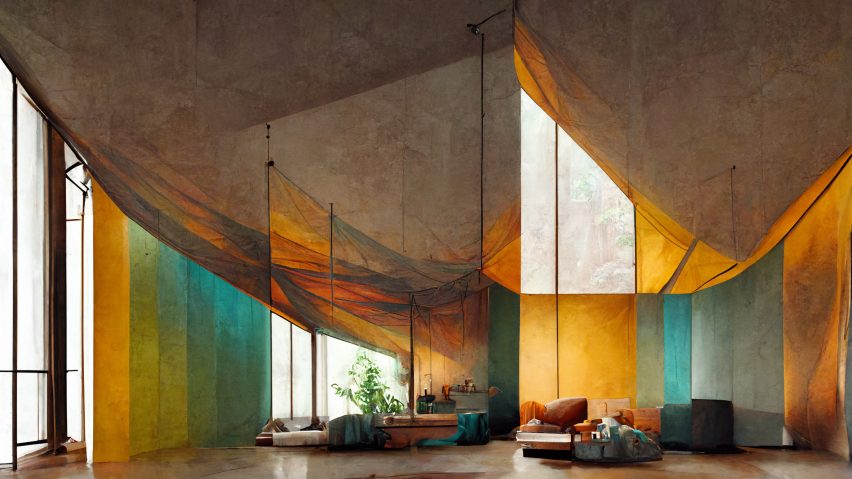
"We need to make sure that [the software] has enough data to not just have this inbred kind of feedback loop where it's only getting better at things that we're asking for," he said.
Cusick told Dezeen that people in the field have been considering this potential and that image-to-image processes – which would allow architects to input a variety of different styles via an image to create a synthetic mixture – can help to mitigate biases in the neural networks or bodies of images and text fed into the programs.
"We're talking about developing cultural models that can capture as much cultural data as any given country would be willing to give," he said, adding that Stability AI is having discussions about creating culture-specific neural networks.
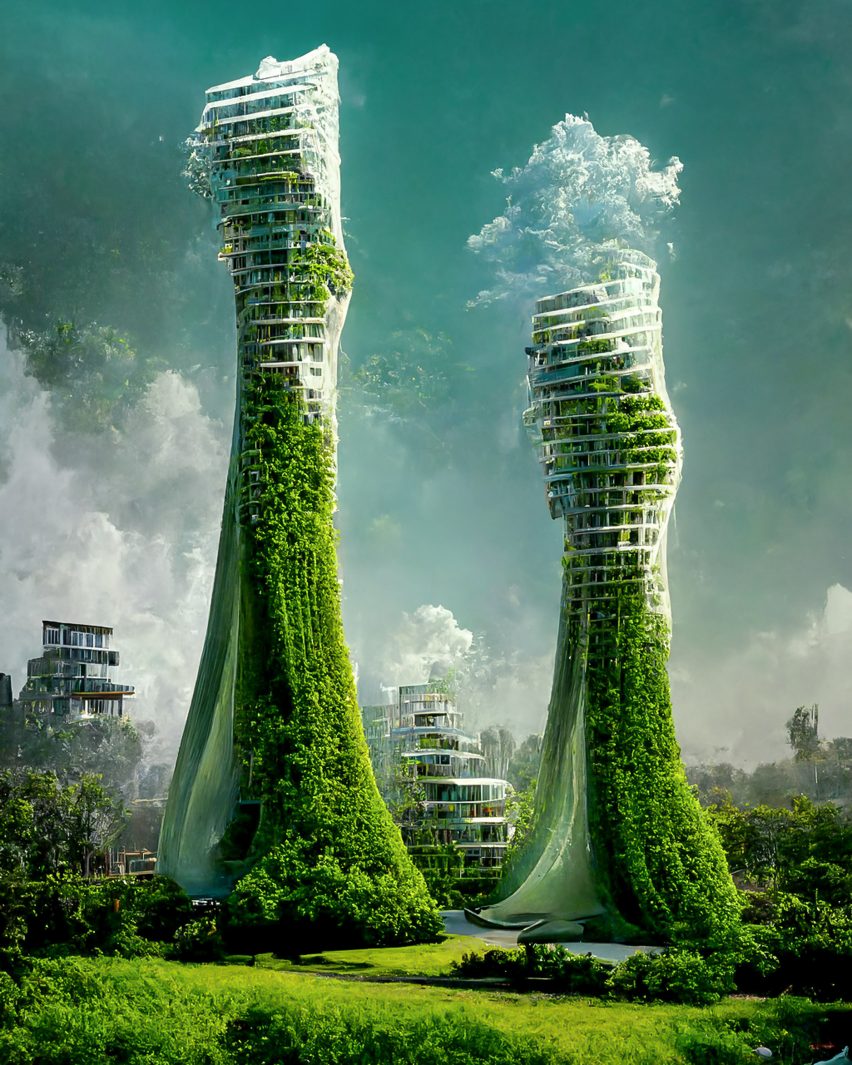
Despite cultural biases, designers like Bhatia believe that technology can bridge the gap between the human and the natural by showing buildings with natural attributes – such as the form of a tree – that AI can capture with a high degree of detail.
"The idea is to make people think of a future where architecture co-exists with nature," said Bhatia.
"With the immense amount of research going on in building materials and technology, I am sure we can bring architecture closer to nature."
Kudless is more sceptical about the utopian visions associated with technology.
"Culture will always be full of biases and we're never going to reach this point of a utopian society," he said. "It's just a mirror and I think it helps us understand ourselves better."
The co-founders of furniture sourcing platform Clippings recently said they believe that artificial intelligence will "empower designers".
Other people using the technology include architecture critic Oliver Wainwright, who has created a speculative proposal for the Serpentine Pavilion using DALL-E.
Dezeen is on WeChat!
Click here to read the Chinese version of this article on Dezeen's official WeChat account, where we publish daily architecture and design news and projects in Simplified Chinese.
Dezeen in Depth
If you enjoy reading Dezeen's interviews, opinions and features, subscribe to Dezeen In Depth. Sent on the last Friday of each month, this newsletter provides a single place to read about the design and architecture stories behind the headlines.